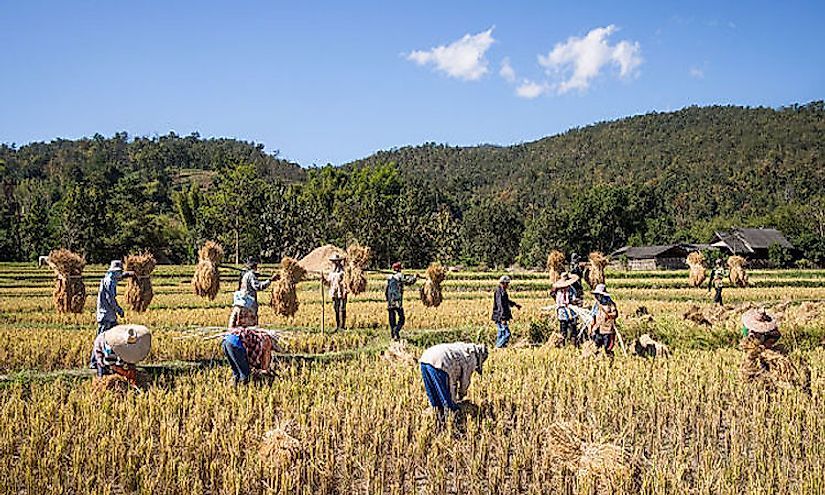The Economy Of Thailand

Thailand has a heavily export-dependent economy and the industrial and service sectors are the biggest contributors to its economy. The country ranks the world’s 22nd largest export economy. It has been ranked as an upper-middle income economy since 2011 and has exhibited sustained economic and social progress over the years. Thailand’s economy particularly experienced enormous growth between 1986 and 2005 when effective policies were adopted such as diversification and industrialization coupled with contribution from a robust private sector. During this period, poverty levels substantially declined in the country. The Thai baht (THB) is Thailand’s currency, used by some of its neighbors including Laos, Myanmar, and Cambodia.
Overview Of The Economy Of Thailand
Thailand’s fiscal year runs from October 1st to September 30th the following year. Its nominal GDP in 2016 was estimated at $404.824 billion ranking 32nd in the world. In 2016, the country ranked 22nd in the world by Purchasing Power Parity which was $1.108 trillion. The country’s GDP recorded a growth rate of 0.8% in 2014, 2.8% in 2015, 2.5% in 2016, and a projected growth of 2.6% in 2017. The contribution by sector to the GDP is estimated at services (52.4%), agriculture (8.4%), and industry (39.2%). The nominal GDP per capita in 2015 was estimated at $5,771 and $15,319 by PPP.
Thailand has an estimated headline inflation of 3.02% and 13.15% of the population in 2011 lived below the poverty line. The country’s labor force stands at 39.41 million with a 0.9% unemployment rate. Thailand is ranked 18th on account of the ease of doing business. Its expenses amount to THB 2,402.5 billion and THB 2,157.6 billion for revenues. The country’s public debt is 42.9% of GDP.
Main Industries Of Thailand
The Automobiles and automotive parts industry dominate the industrial sector at 11%. The rest of the industries include financial services, garments and textiles, electronics, tourism, plastics, computers and accessories, cement, plastics, and furniture. The agricultural sector is dominated by produce such as rice, corn, sugarcane, coconuts, and rubber. Beverages and tobacco also contribute immensely to the economy.
Primary Exports And Export Partners Of Thailand
Thailand’s exports were valued at $214.37 billion in 2015. These exports included rice, garments and textiles, computers, integrated circuits, footwear, automobiles, refined petroleum, rubber, and fishery products. The United States imports 11.2% of Thailand’s exports followed by China, Hong Kong, Japan, Malaysia, Vietnam, and Australia.
Chief Imports And Import Partners Of Thailand
The country’s imports in 2015 were valued at $202.65 billion. The principal imports are crude and refined petroleum, integrated circuits, capital and intermediate goods, gold, and consumer goods. Thailand’s major importers are China (20.3%), Japan (15.4%), US (6.9%), Malaysia (5.9%), and the UAE (4.0%).
Challenges To The Economy Of Thailand
Income inequality and corruption are major concerns in Thailand. Although poverty levels have been on a downward trajectory in the country, the North, Northeast, and the Deep South rural communities have been subjected to disproportional levels of poverty. Continuous political instability and a ‘coup culture’ has reduced investor confidence in the country and slowed down the implementation of economic policies.
Future Plans
Thailand unveiled a strategic 20-year plan in 2016 to propel the country to developed status. The plan sets the guidelines for reforming existing industries as well as stimulating others, boosting tourism and external trade, reducing government bureaucracies, and implementing infrastructure.











